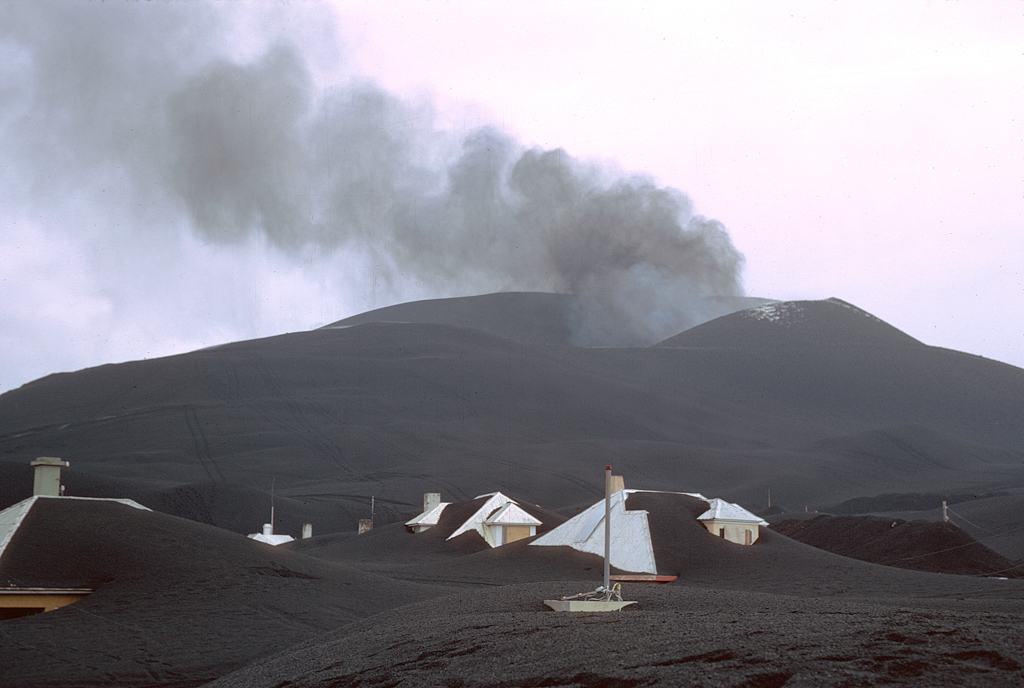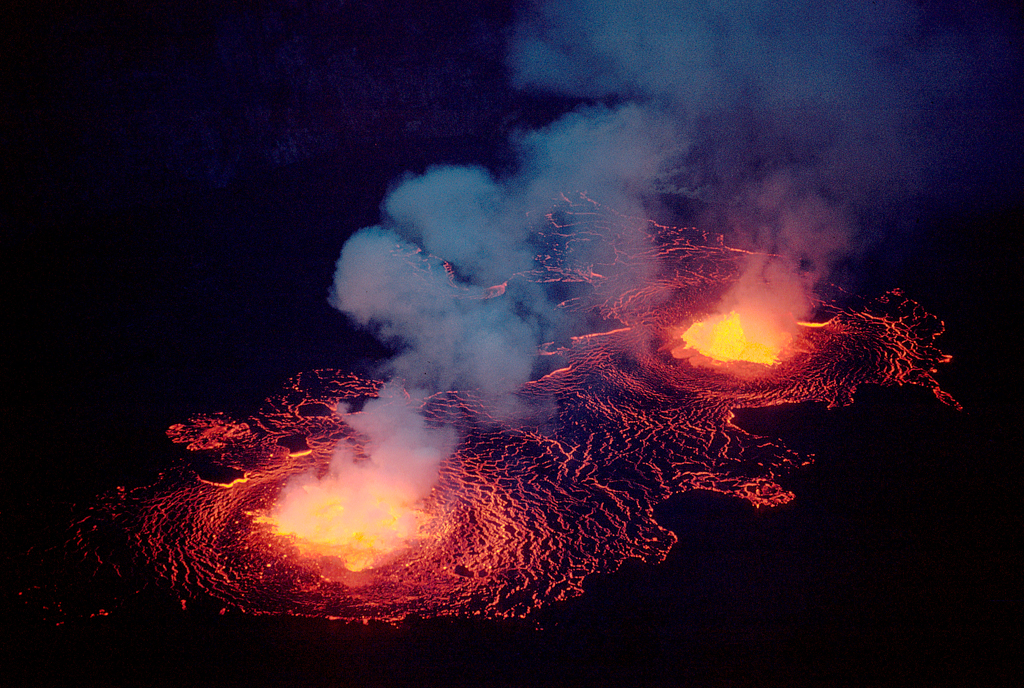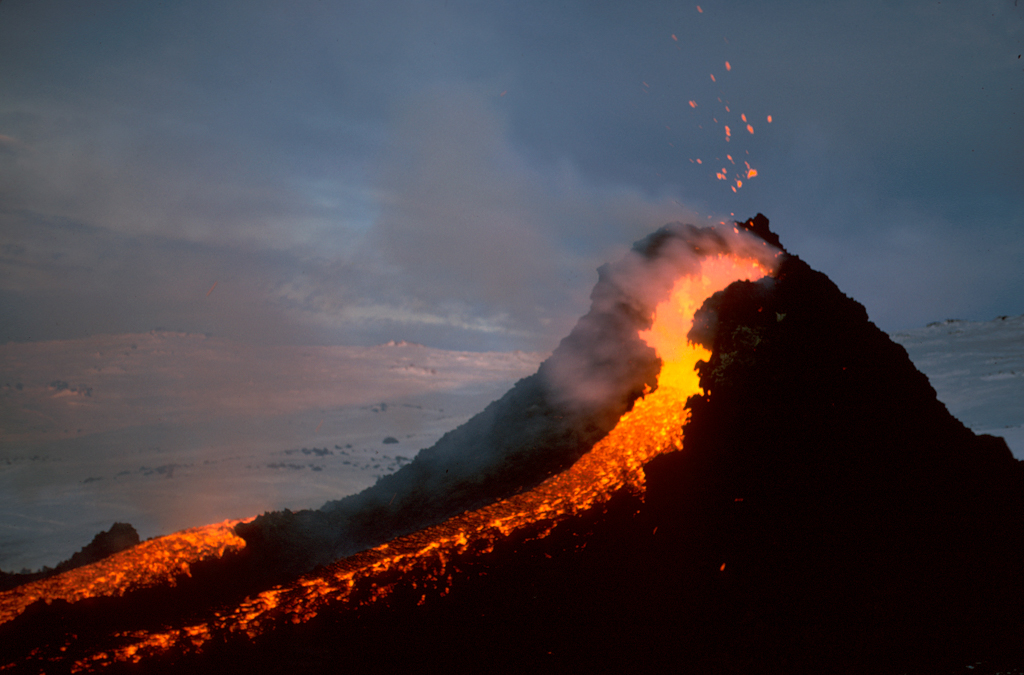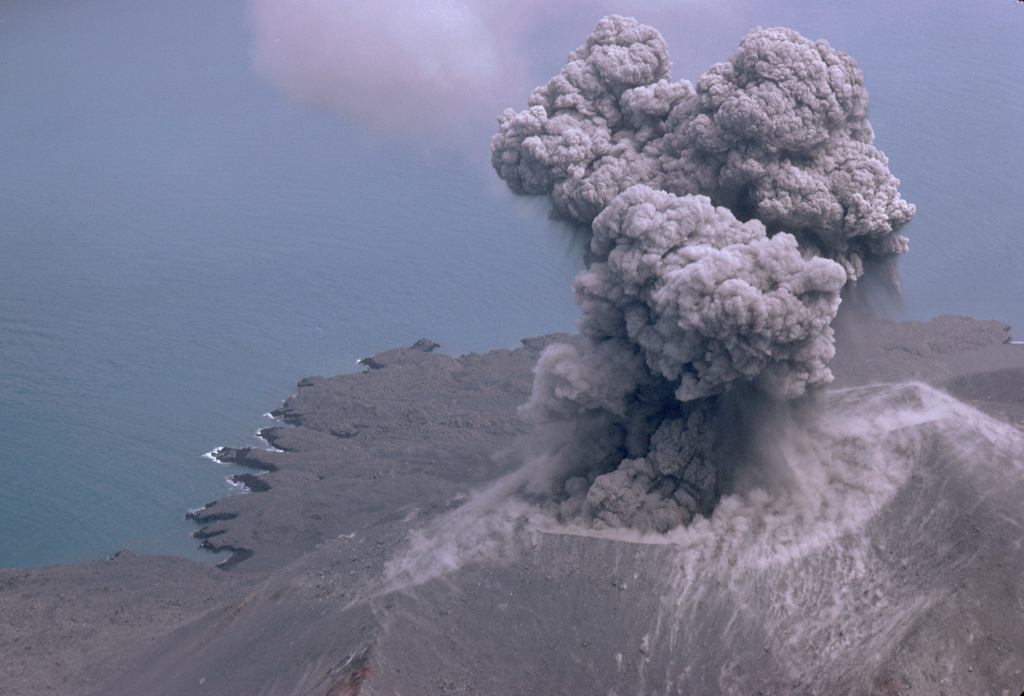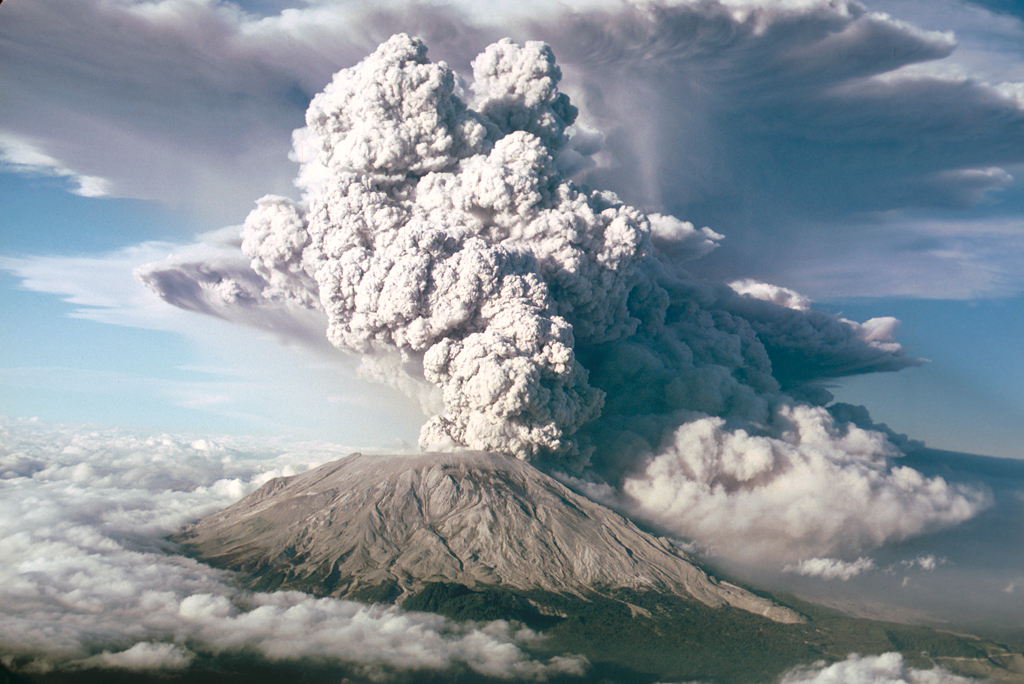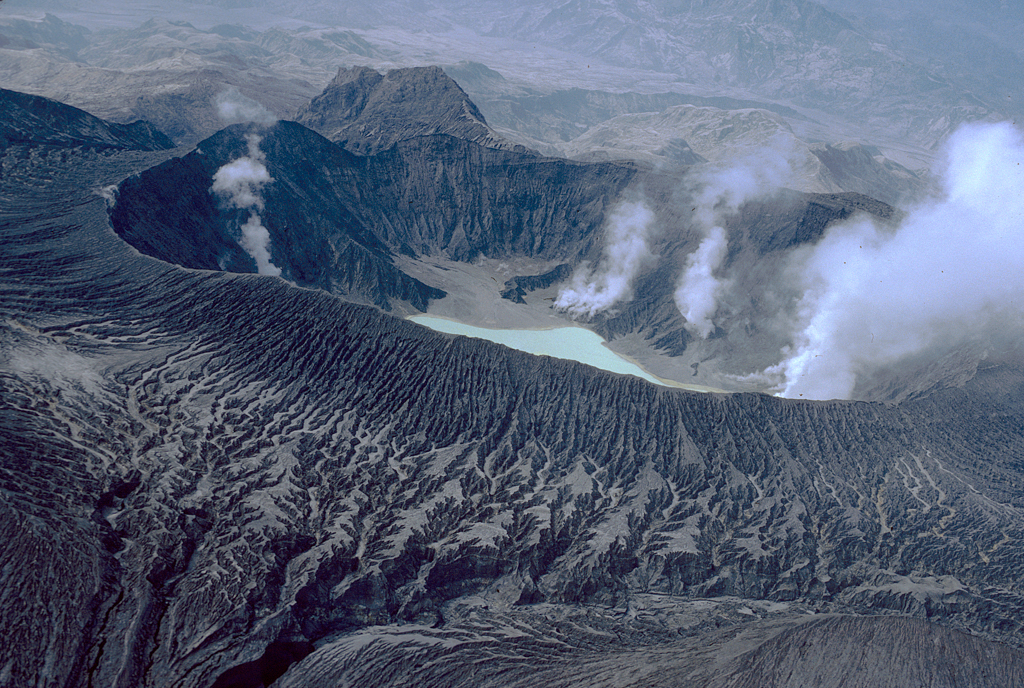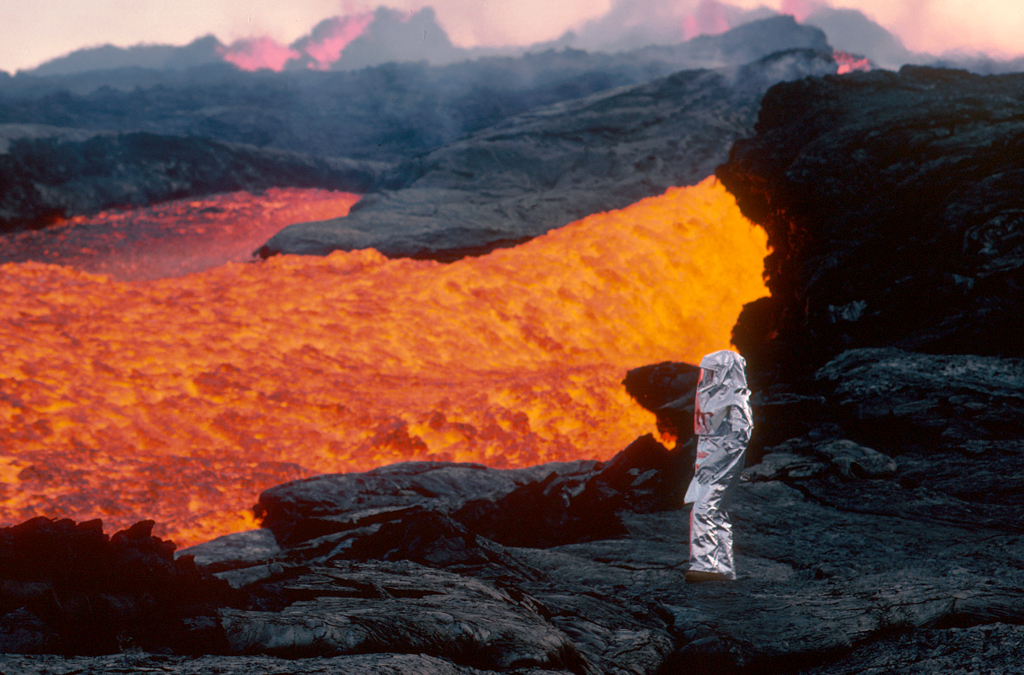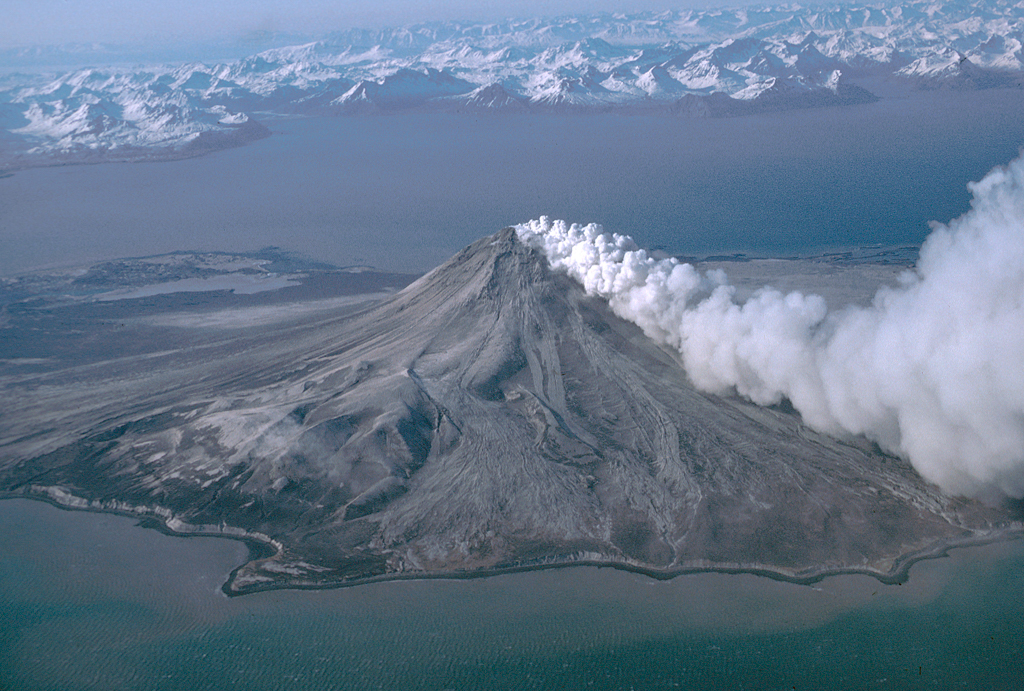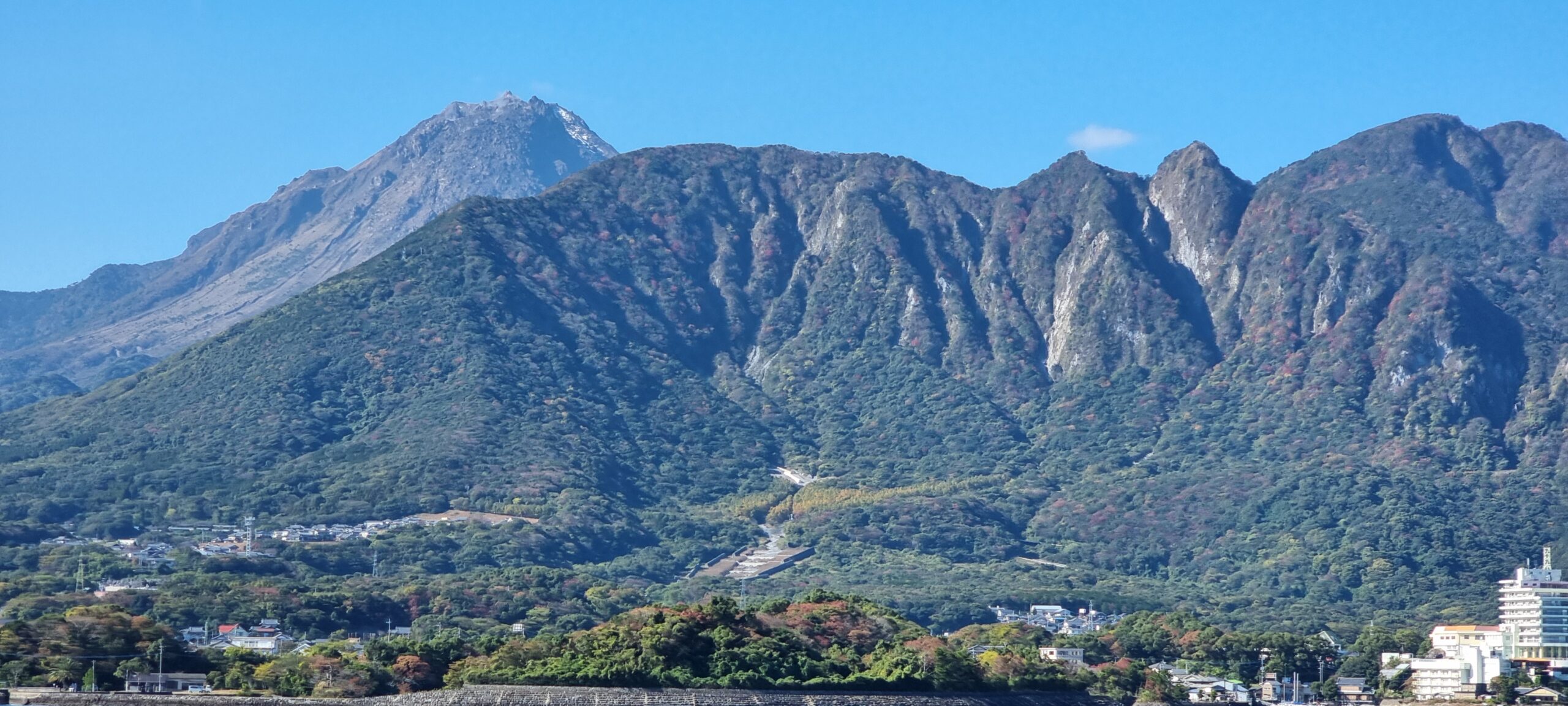A SELECTION FROM OVER 200 EXPEDITIONS
1973 – Eldfell volcano, Iceland
On January 23, in the middle of the night, a 1,600-meter-long fissure opened up less than 150 meters from the first houses of the town of Heimaey. At least fifty mouths erupted all along the fissure, spewing fountains of lava 100 meters into the air.
Maurice and Katia arrive on January 24, just as the town’s 4,500 residents are being evacuated. They find themselves alone in the abandoned town as ash and slag falls on this northern Pompeii at a rate of one meter per hour. They witness the birth of a new volcanic cone, Edfell, which would rise to a height of 225 meters by the end of the eruption…
1973 – Mount Nyiragongo volcano, Democratic Republic of the Congo
In June, as part of the second week of their stay, Maurice and Katia found themselves in the crater of Mount Nyiragongo, on the second terrace some 180 meters below the summit, overlooking a lava lake as it bubbled up into the crater.
It’s impossible to stand up in the intense heat, so they lie back and contemplate the spectacle as the lava bangs against the walls, roaring and panting with rage. At one point, in lurches of more than ten meters, the lake empties in only a few moments and the activity seems to stop. The surface of the lake cools, forming a black skin barely streaked with glowing lines. What will happen next? Long minutes pass. And then, the lake comes alive again. Its level rises in successive waves, one on top of another, while they hope that it will stabilize at the usual level, because Maurice and Katia have no refuge to take if the lake overflows…
1974 – Mount Etna volcano, Sicily Italy
In February, Maurice and Katia met on Mount Etna, above the village of Bronte, and witnessed the construction of two volcanic cones, the Monte de Fiore.
It’s snowing. As they cross the last of the still-glowing flows, Katia notices flames streaking across the ground just above them. Then, there are muffled rumblings, quickly followed by a shrill, hoarse chirp. It’s a moonless night. Nearby, a plume of steam appears, and the ground shakes a little. Panic! They run into the boulders, stumble, and turn around. A flow rushes down the slopes of the cone, right where they had been just moments before. “Had we passed a second later, or ten meters higher, it would have been certain death in the lava. We don’t talk any more, we’re alive, happy to be alive, the rest doesn’t matter,” Maurice writes in his field notebook…
1979 – Anak Krakatau, Sunda Strait, Indonesia
For a fortnight in September, Maurice and Katia met up for the second time on Krakatau, which made headlines on August 27, 1883, destroying the island and claiming 36,417 victims. They camped by the sea, the only people on the island.
Strong explosions follow one after another, hurling hunks of rock, some of which rise over 400 meters into the air and then seem to fall back down as if in slow motion. Backlit, it’s difficult for them to see and gauge the trajectory of the blocks, which hit the ground with a thud and a high-pitched hiss as they land in the ash. With each explosion, Maurice and Katia stop what they’re doing to track the falling rocks with their eyes. A large explosion occurs, the volcano pulling slightly towards them. A boulder arrives with a vengeance, crashing down on the foot of their camera tripod , tearing off the tip and setting it alight…
1980 – Mount St. Helens volcano, Washington State, USA
On May 18, after the population had already been evacuated for several weeks, what had been expected finally happened. After 123 years of inactivity, an eruption decapitates Mount St. Helens, removing the last 430 meters of its summit, and generating an explosion with the energy released being equal to the serial detonation of 27,000 Hiroshima bombs.
When Maurice and Katia hear the news, they’re in Mauritius, where Maurice, in between lectures, is learning to scuba dive in order to film Kilauea’s underwater lava flows. He’s furious at having missed the eruption, but they can’t get to the United States until early July, and it’s not until the 22nd that they’re rewarded for their patience by witnessing three successive explosions. Aboard a small airplane, they circle for over three hours around a plume of ash and rocks that rises to an altitude of 18 kilometers…
1983 – El Chichon volcano, Mexico
On March 28, at 11.32 pm, and again on March 29, at 11.10 am, two colossal eruptions generated plumes of ash and boulders that reached over 24 kilometers high, which then collapsed on themselves, producing pyroclastic clouds and pumice flows. The toll was heavy, with nine villages wiped off the map. There were 187 victims, and another 3,450 were declared missing.
With no roads and no helicopters available, the affected area is cut off from the rest of the world. After a three-day journey by mule, Maurice and Katia arrive at the scene of the tragedy, disturbing the dogs digging up human remains…
1984 – Mauna Loa volcano, Hawaii, USA
On the evening of March 24, Maurice and Katia were celebrating their friend, Bob Decker, retiring from his position as the director of the Hawaii Volcanological Observatory. Then, on March 25 it’s Maurice’s birthday, but it’s also the day Mauna Loa awakens, at 1.30 am, to become the biggest fissural eruption of the 20th century.
All along the twenty-five-kilometer fissure, fountains of lava rise fifty meters into the air with a deafening noise, a hemorrhage that seems unable to stop. They fly over the lava curtains in a helicopter, doors open, and the heat is so intense that Maurice’s camera is on fire. They can’t imagine what would happen to them if the aircraft’s kerosene ignites…
1986 – Mount St. Augustine volcano, Alaska, USA
In 1986, after eight years of lethargy, the St. Augustine volcano started showing all the signs of renewed activity, and in August, Maurice and Katia found themselves on their third visit to this hard-to-reach island. Maurice had only one thing in mind: to get as close as possible to a pyroclastic flow—an avalanche of gas at several hundred degrees, impalpable ash, and rocks that can reach the size of houses, an immense mass that can flow at speeds of over 150 kilometers per hour in absolute silence.
The fiery clouds appear every twenty minutes or so. Each time, they follow the same avalanche corridor. All the conditions were in place for Maurice’s dream to come true, as he found himself filming the most dangerous phenomenon in volcanism from less than fifty meters away…
1988 – Ol Doinyo Lengaï volcano, Tanzania
We hear the muffled sounds of heavy breathing followed by lapping. We are 200 meters down in the crater. It’s now dark. The fog is getting hot and sticky, the smell of gas is getting stronger. We reach the top of a dark, gutted mound, inside of which laps a small lava lake some twenty square meters in size. Cheerful bubbles of black, fluid lava burst unceasingly from within it in a frenzied farandole. I look up at Maurice, who is ecstatic. We’re standing in front of a lake of carbonatite lava, a black, fluid lava like the water of a mountain torrent that nothing can stop, turning white after twenty-four hours of cooling. Lengaï is the only volcano in the world to produce such atypical lava.
That same year, at the Volcanology Congress in Kagoshima, Japan, Maurice showed the astonished international scientific community the first-ever filmed images of an eruption from this incredible volcano.
1991 – Fugen Dake volcano, Mount Unzen, Japan
Late in the evening of Wednesday, May 29, Maurice and Katia arrived in Shimabara, the town at the foot of Mount Unzen. There, they met up with Harry Glicken, a 33-year-old American volcanologist living in Japan, whom they had initially met during the eruption of Mount Saint-Helens in 1980. It was raining cats and dogs. The summit of the volcano and the lava dome under construction were shrouded in fog. Parts of the dome regularly collapsed, generating pyroclastic flows—fiery avalanches of gas, impalpable ash, and boulders. This was what they had come for: they wanted to document the eruption so that they could insert some shots into their second film on volcanic hazards being produced in partnership with UNESCO.
At 4.08pm on June 3, it stops raining. A strong wind blows. Maurice, Katia, and Harry, like the 29 journalists, cameramen, and cab drivers positioned on the small road below them, see the front of a fiery cloud breaking through the cloud barrier. They have little more than a minute to live.

